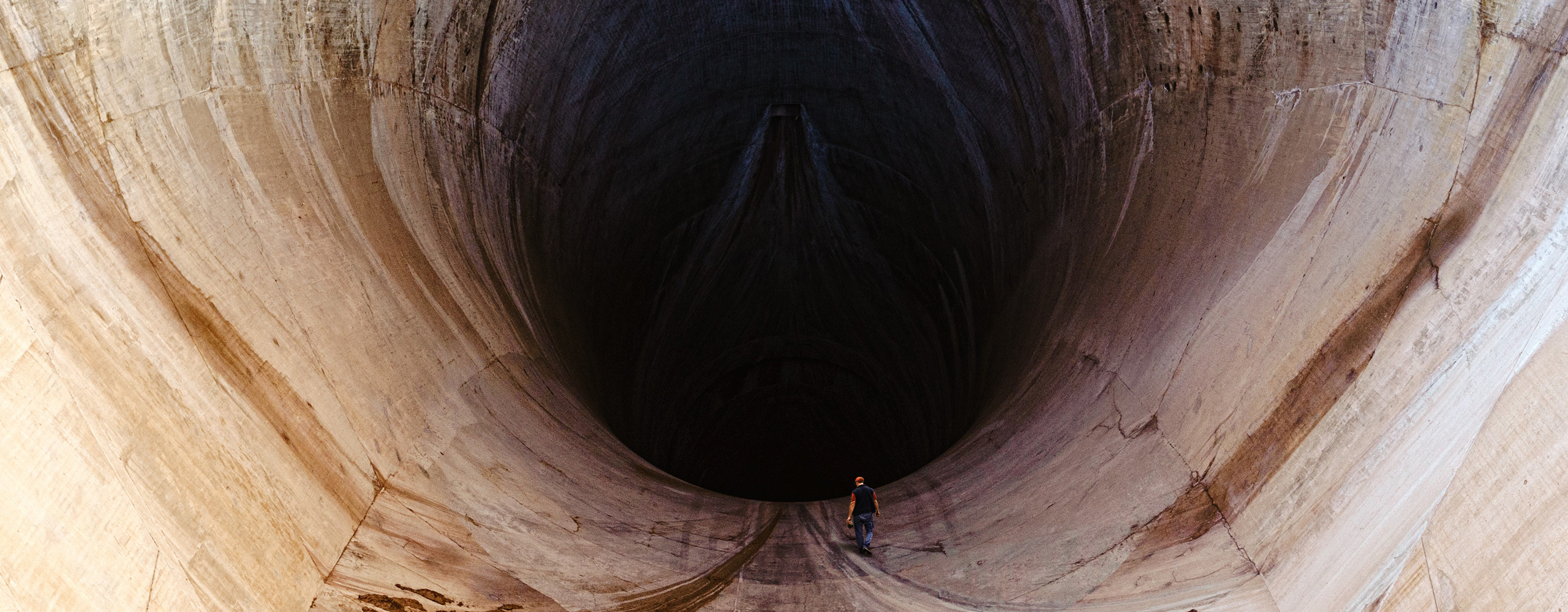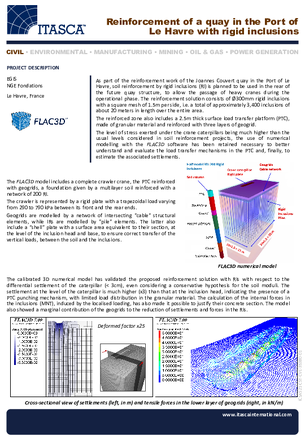Reinforcement of a quay in the Port of Le Havre with rigid inclusions
Project Description
As part of the reinforcement work of the Joannes Couvert quay in the Port of Le Havre, soil reinforcement by rigid inclusions (RI) is planned to be used in the rear of the future quay structure, to allow the passage of heavy cranes during the operational phase. The reinforcement solution consists of Ø300mm rigid inclusions with a square mesh of 1.5m per side, i.e. a total of approximately 3,400 inclusions of about 20 meters in length over the entire area.
The reinforced zone also includes a 2.5m thick surface load transfer platform (PTC), made of granular material and reinforced with three layers of geogrid.
The level of stress exerted under the crane caterpillars being much higher than the usual levels considered in soil reinforcement projects, the use of numerical modelling with the FLAC3D software has been retained necessary to better understand and evaluate the load transfer mechanisms in the PTC and, finally, to estimate the associated settlements.

Itasca's Role
The FLAC3D model includes a complete crawler crane, the PTC reinforced with geogrids, a foundation given by a multilayer soil reinforced with a network of 200 RI.
The crawler is represented by a rigid plate with a trapezoidal load varying from 290 to 790 kPa between its front and the rear ends.
Geogrids are modelled by a network of intersecting "cable" structural elements, while IRs are modelled by "pile" elements. The latter also include a “shell” plate with a surface area equivalent to their section, at the level of the inclusion head and base, to ensure correct transfer of the vertical loads, between the soil and the inclusions.
Project Results
The calibrated 3D numerical model has validated the proposed reinforcement solution with RIs with respect to the differential settlement of the caterpillar (< 3cm), even considering a conservative hypothesis for the soil moduli. The settlement at the level of the caterpillar is much higher (x3) than that at the inclusion head, indicating the presence of a PTC punching mechanism, with limited load distribution in the granular material. The calculation of the internal forces in the inclusions (MNT), induced by the localised loading, has also made it possible to justify their concrete section. The model also showed a marginal contribution of the geogrids to the reduction of settlements and forces in the RIs.
Cross-sectional view of settlements (left, in m) and tensile forces in the lower layer of geogrids (right, in kN/m)



